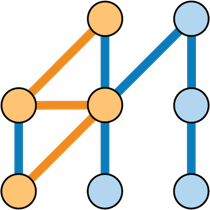As of the 3.0 release, StructureMap provides a streamlined fluent interface called the Registry DSL to configure a StructureMap Container with both explicit registrations and conventional auto-registrations. StructureMap no longer supports Xml configuration or MEF-style attribute configuration -- but there is some facility for rolling your own attribute-based configuration support.
The first step in using StructureMap is configuring a Container object. The following examples are based on the usage of the Registry DSL.
Let's say that you have a simple set of services like this:
public interface IBar
{
}
public class Bar : IBar
{
}
public interface IFoo
{
}
public class Foo : IFoo
{
public IBar Bar { get; private set; }
public Foo(IBar bar)
{
Bar = bar;
}
}
A simple configuration of a StructureMap Container might then be:
// Example #1 - Create an container instance and directly pass in the configuration.
var container1 = new Container(c =>
{
c.For<IFoo>().Use<Foo>();
c.For<IBar>().Use<Bar>();
});
// Example #2 - Create an container instance but add configuration later.
var container2 = new Container();
container2.Configure(c =>
{
c.For<IFoo>().Use<Foo>();
c.For<IBar>().Use<Bar>();
});
Initializing or configuring the container is usually done at application startup and is located as close as possible to the application's entry point. This place is sometimes referred to as the composition root of the application. In our example we are composing our application's object graph by connecting abstractions to concrete types.
We are using the fluent API For<TInterface>().Use<TConcrete>() which registers a default instance for a given plugin type (the TInterface type in this case). In our example we want an new instance of Foo every time we request the abstraction IFoo.
The recommended way of using the Registry DSL is by defining one or more Registry classes. Typically, you would subclass the Registry class,
then use the Fluent API methods exposed by the Registry class to describe a Container configuration.
Here's a sample Registry class used to configure the same types as in our previous example:
public class FooBarRegistry : Registry
{
public FooBarRegistry()
{
For<IFoo>().Use<Foo>();
For<IBar>().Use<Bar>();
}
}
When you set up a Container , you need to simply direct the Container to use the configuration in that Registry class.
// Example #1
var container1 = new Container(new FooBarRegistry());
// Example #2
var container2 = new Container(c => { c.AddRegistry<FooBarRegistry>(); });
// Example #3 -- create a container for a single Registry
var container3 = Container.For<FooBarRegistry>();
In real world applications you also have to deal with repetitive similar registrations. Such registrations are tedious, easy to forget and can be a weak spot in your application. StructureMap provides Auto-Registration and Conventions which mitigates this pain and eases the maintenance burden. StructureMap exposes this feature through the Registry DSL by the Scan method.
In our example there is an reoccuring pattern, we are connecting the plugin type ISomething to a concrete type Something, meaning IFoo to Foo and IBar to Bar. Wouldn't it be cool if we could write a convention for exactly doing that? Fortunatly StructureMap has already one build in. Let's see how we can create an container with the same configuration as in the above examples.
// Example #1
var container1 = new Container(c =>
c.Scan(scanner =>
{
scanner.TheCallingAssembly();
scanner.WithDefaultConventions();
}));
// Example #2
var container2 = new Container();
container2.Configure(c =>
c.Scan(scanner =>
{
scanner.TheCallingAssembly();
scanner.WithDefaultConventions();
}));
We instruct the scanner to scan through the calling assembly with default conventions on. This will find and register the default instance for IFoo and IBar which are obviously the concrete types Foo and Bar. Now whenever you add an additional interface IMoreFoo and a class MoreFoo to your application's code base, it's automatically picked up by the scanner.
Sometimes classes need to be supplied with some primitive value in its constructor. For example the System.Data.SqlClient.SqlConnection needs to be supplied with the connection string in its constructor. No problem, just set up the value of the constructor argument in the bootstrapping:
var container = new Container(c =>
{
//just for demo purposes, normally you don't want to embed the connection string directly into code.
c.For<IDbConnection>().Use<SqlConnection>().Ctor<string>().Is("YOUR_CONNECTION_STRING");
//a better way would be providing a delegate that retrieves the value from your app config.
});
So far you have seen an couple of ways to work with the Registry DSL and configure a Container object. We have seen examples of configuration that allow us to build objects that don't depend on anything like the Bar class, or do depend on other types like the Foo class needs an instance of IBar. In our last example we have seen configuration for objects that need some primitive types like strings in its constructor function.

